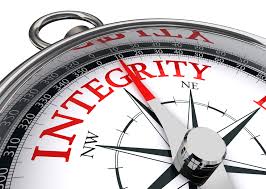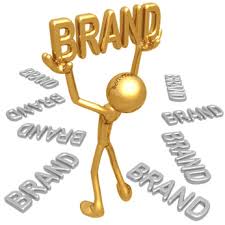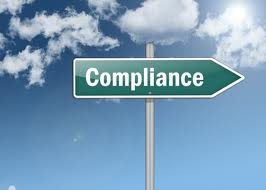Corporate Branding and Ethics and Compliance Charters and Policies
 There is a lot written on the value of symbols in political and public relations campaigns. My favorite President, Franklin Roosevelt, was a master at using symbols to communicate powerful ideas to the public. Ronald Reagan later adopted many similar approaches to influence public opinion.
There is a lot written on the value of symbols in political and public relations campaigns. My favorite President, Franklin Roosevelt, was a master at using symbols to communicate powerful ideas to the public. Ronald Reagan later adopted many similar approaches to influence public opinion.
A company operates in much the same way, especially when it comes to ethics and compliance. In many respects, a chief compliance officer has to recognize the value of communications strategies, the use of symbols, and the importance of concise ideas and messages.
More specifically, a company’s presentation of its code of conduct, values, ethics and compliance program is an important part of messaging.
If you look at a company’s website, you can quickly determine how much value the company places on ethics and compliance. The first click should get you to the company’s governance documents, and assuming it is a public company, you should review the charter for the audit (and compliance) committee. If you have a separate compliance committee, then you may be looking at a company committed to ethics and compliance.
The audit/compliance committee charter should address a number of important issues. It should address specific ethics and compliance responsibilities of the audit committee. If you see only one sentence of a paragraph/subparagraph dedicated to ethics and compliance, usually this is a warning or ironically, a red flag. Ideally, a company may have a separate charter for ethics and compliance but that is rare to find these days.
After looking at the governance documents, it is important to examine the company’s code of conduct, which is usually on the website, and the global anti-corruption policy, which should be on the website.
Both these documents are important indicators of the company’s commitment to ethics and compliance – if the code of conduct is a prior form used by many companies ten years ago, that is a strong indication that the ethics and compliance program has not been refreshed for quite a while. On the other hand, if you find a concise, fresh and well-presented code of conduct outlining basic compliance principles and values, you are looking at a company that has refreshed its compliance program and hopefully moved beyond the paper to build a real compliance infrastructure.
Many companies are now placing their anti-corruption policies on their websites to reinforce their commitment to anti-corruption compliance. It is a symbolic but important indication of a company’s commitment.
The company’s basic website presentation should be aimed at answering an important question – how do we want to present our company to the outside world? What is the message we want to send? The outside world in this case means – customers, suppliers, regulators, politicians, investors, and the public in general.
 In today’s world, there is great value being placed on corporate ethics and compliance, not just from government prosecutors, but from customers, suppliers, investors, and the public. A company has to attend to this image and make sure the elements of a robust ethics and compliance program are evident, embraced and adequately communicated to the outside world. Obviously, there is much more to this project when it comes to commitment to operate consistent with this image. Actions always speak louder than words, and there is nothing that can undermine a company’s reputation more than a serious controversy created by corporate misconduct.
In today’s world, there is great value being placed on corporate ethics and compliance, not just from government prosecutors, but from customers, suppliers, investors, and the public. A company has to attend to this image and make sure the elements of a robust ethics and compliance program are evident, embraced and adequately communicated to the outside world. Obviously, there is much more to this project when it comes to commitment to operate consistent with this image. Actions always speak louder than words, and there is nothing that can undermine a company’s reputation more than a serious controversy created by corporate misconduct.
Ethics and compliance is a new and important part of sustaining a corporate brand and image. That has tremendous impact on the overall health and profitability of a company. When corporate leaders attend to it, the company, its shareholders, and its employees all benefit.















